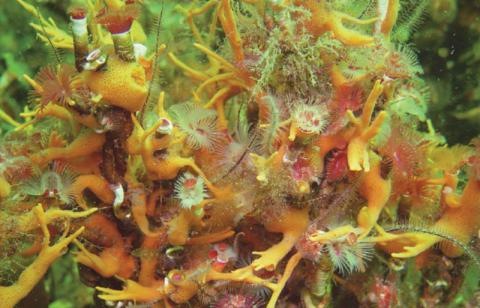Serpulid aggregations
What is it:
Large clumps of the calcareous tubes of the worm Serpula vermicularis rise from the sea bed to in excess of 1m high and 2m diameter in some of the oldest aggregations. They provide a hard substrate on an otherwise sedimentary sea bed and support a highly diverse epifauna of sponges, sea squirts, brittlestars and sea urchins etc.. Serpulid aggregations are nationally rare, only known from two places in Scotland, Loch Creran and Loch Teacuis, and from only two other places in the world. The reefs in Loch Creran are considered the best example of this habitat in the world.
Links to Scotland's Marine Atlas:
This information page is part of the theme:

Serpulid aggregations © SNH

